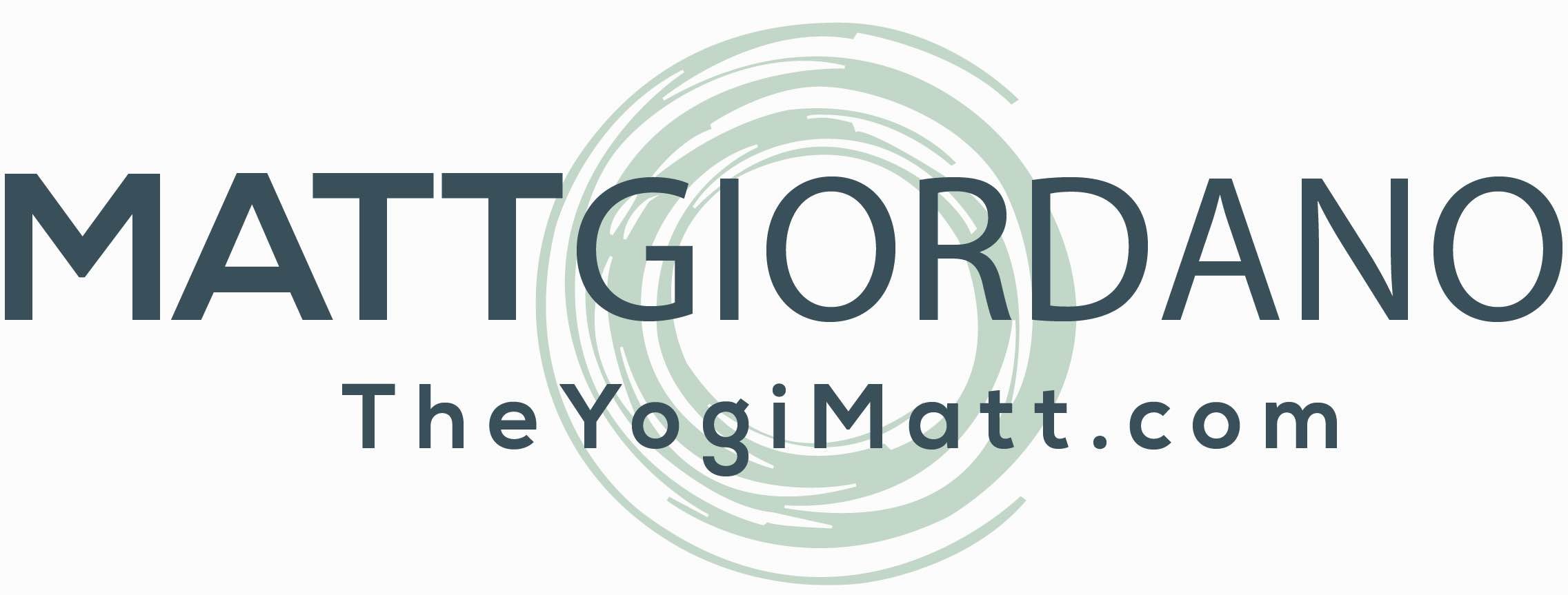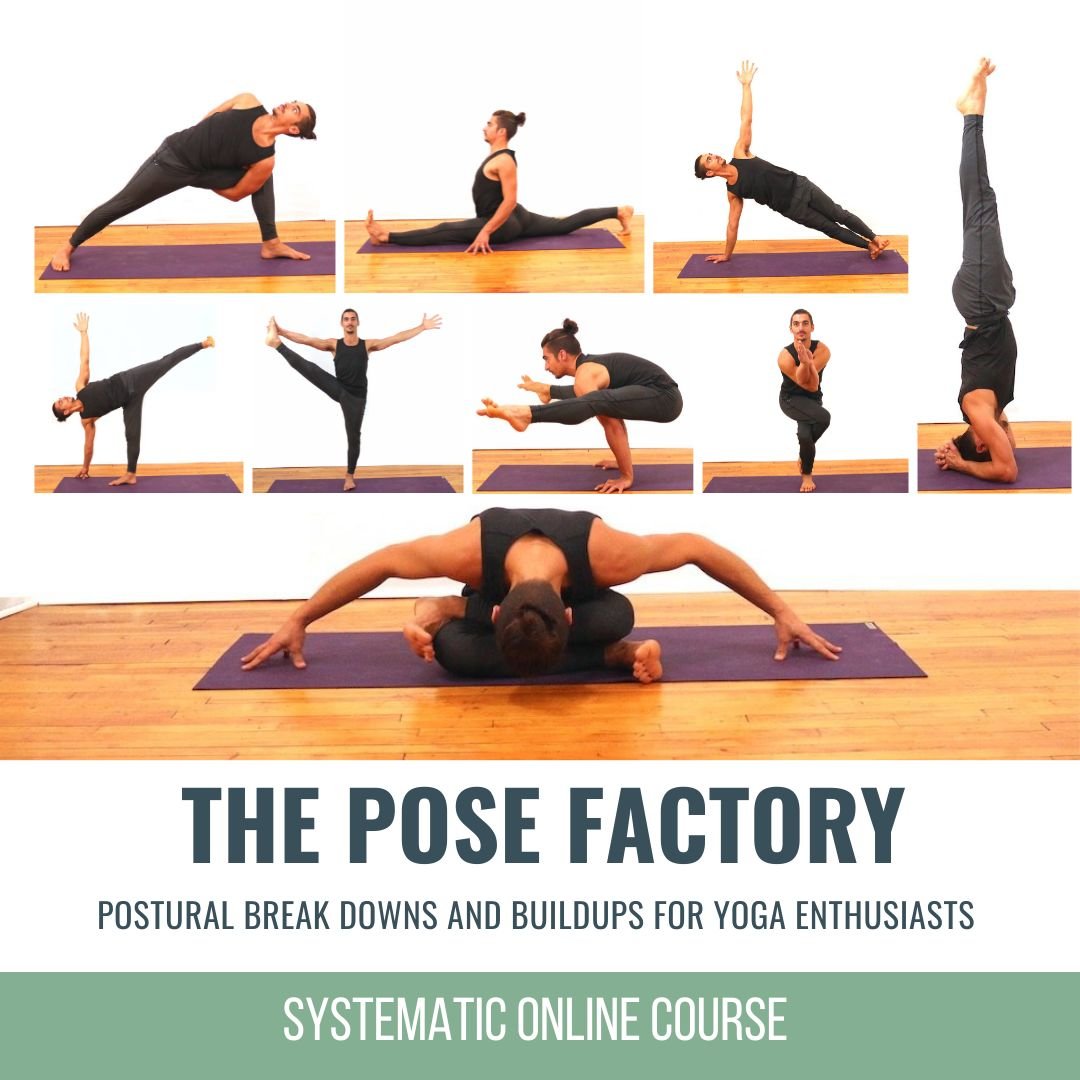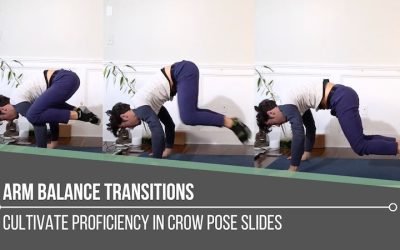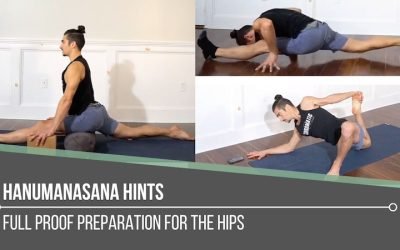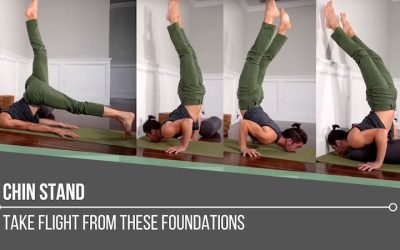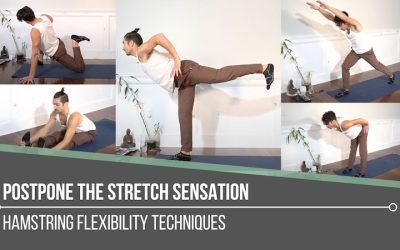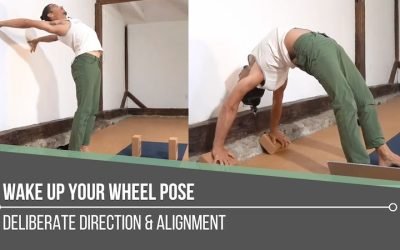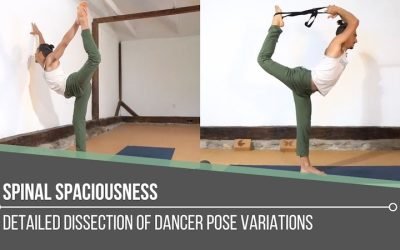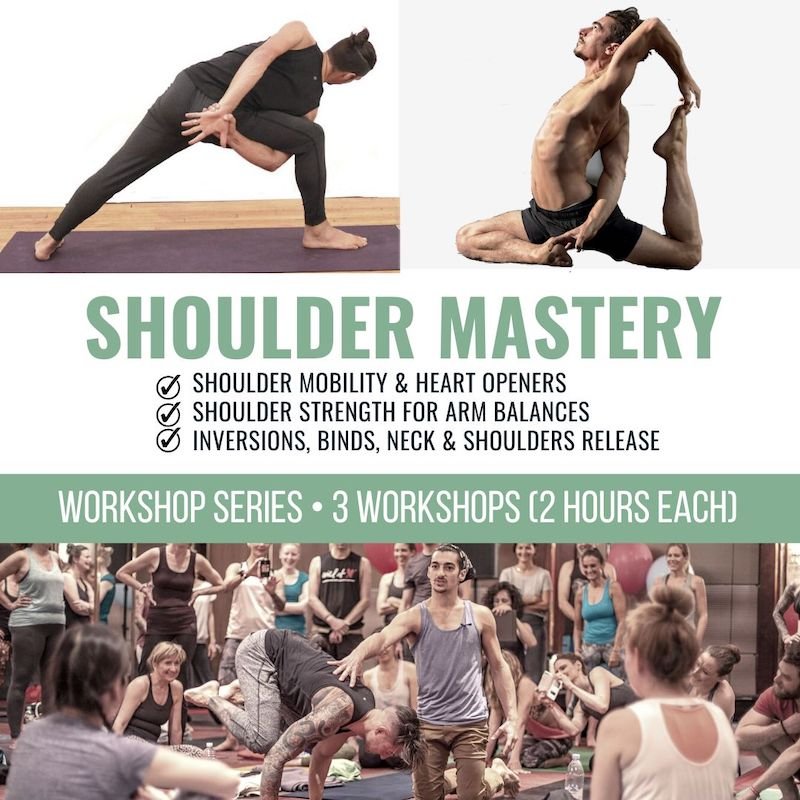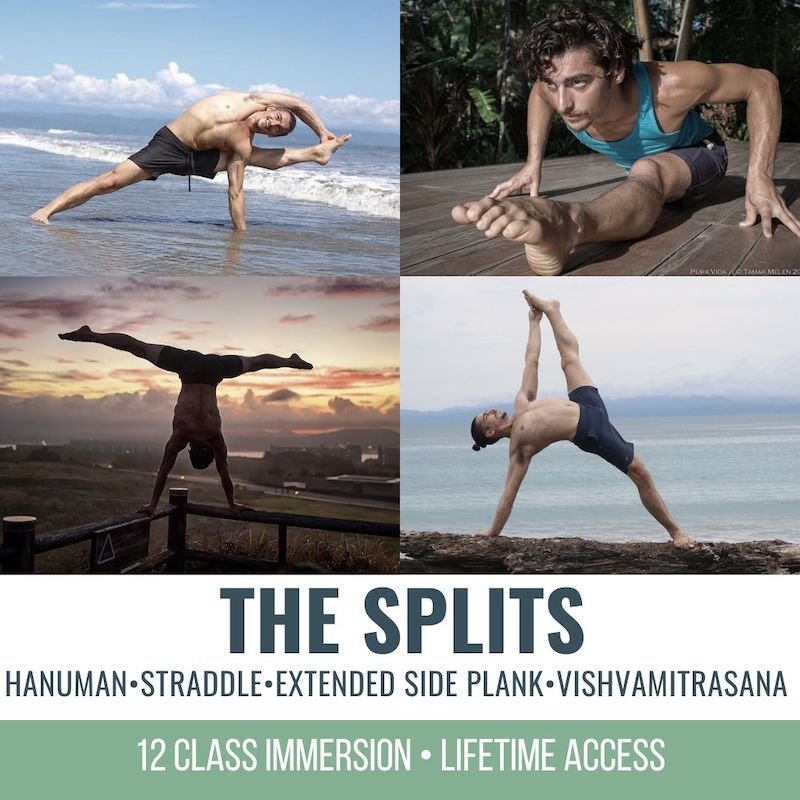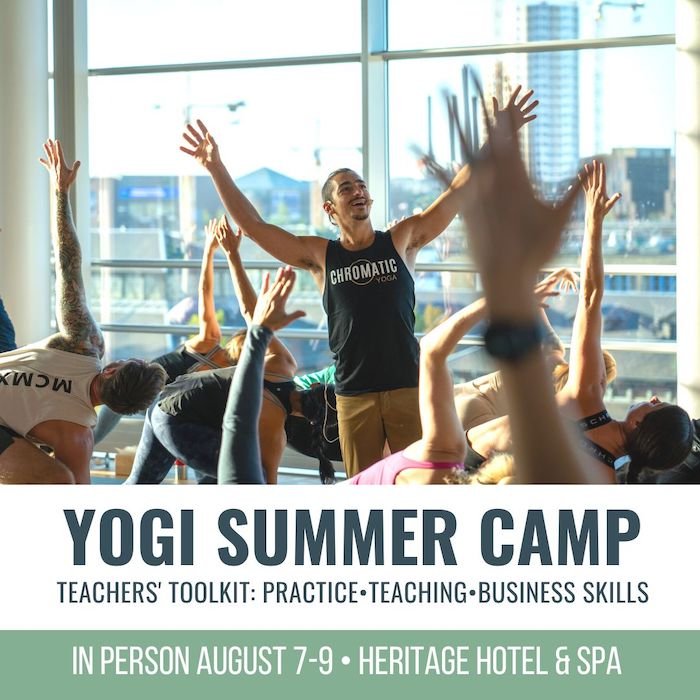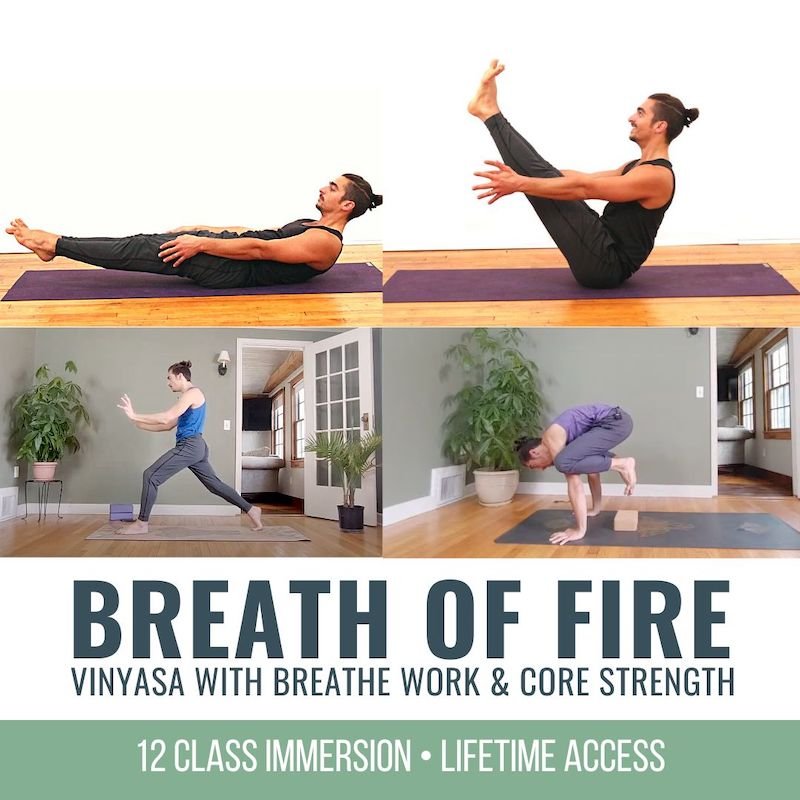Arm Balance TransitionskakasanaARM BALANCE TRANSITIONS Arm balance postures can be challenging enough without attempting to layer on a smooth transition in and out of them. However, fluid transitions are a natural progression in our yoga practice; they also provide...
Strengthen Your Ankles
Strengthen Your Ankles
foot health
STRENGTHEN YOUR ANKLES
Our feet are the foundation of our bodies. Placing great emphasis on creating ankle stability and mobility during our asana practice should be obvious; unfortunately, this is not always the case. Maintaining a regular practice can help us greatly benefit in this area of the body, even when we’re not specifically focusing on our feet. The simple nature of the practice exposes us to a variety of movements in the ankle joints. It’s up to us, however, to be intentional about incorporating specific actions to strengthen our ankles.
The question is how we can incorporate these actions and techniques. What we’ll see in today’s video is how Matt seamlessly integrates techniques into common postures. These techniques not only translate into a more challenging arm balance but also serve to help us to minimize ankle injuries.
THE POSE FACTORY
WAITLIST NOW OPEN
- Dogmatic alignment versus functional alignment
- Learn popular postural pitfalls
- Myths versus truth
- Formulaic approach for comprehensive learning
- Excellent guide for yoga enthusiasts
- Must-have for yoga teachers
- Joint-health awareness
- Muscle integrity, range of motion
- Props for accessibity
- Alignment alterations in the case of injuries
ANATOMY OF THE ANKLES
In order to strengthen our ankles and create a “corset of support,” it’s helpful to understand the muscles we are affecting with each action. There are 4 actions of the ankle: dorsiflexion, plantar flexion, inversion, and eversion. Although Matt touches on each one of these, our focus for today is on inversion and eversion. Everting the ankle helps activate the fibularis muscles (outer shin). There are 3 fibularis muscles (2 that attach into the outer foot and 1 that is more towards the front of the outer ankle).
The tibialis posterior (along the back side of the calf) helps invert the ankle. This muscle runs along the back of the shinbone, or tibia, and opposes the fibularis muscles. Matt refers to these two muscles as the “bootstrap” muscles, which help stabilize the ankle.
WATCH THE VIDEO
STRENGTHEN YOUR ANKLES TO MINIMIZE INJURY: IMPLEMENT KEY TECHNIQUES IN FAMILIAR YOGA POSTURES
PREVENTING POTENTIAL INJURIES
If you’ve ever experienced an ankle sprain or the pain of plantar fasciitis, you’ll be glad to know that the techniques from this video can be extremely helpful in preventing these types of injuries.
The outer ligaments of the ankles are smaller and less powerful compared to the ligaments on the inside of the ankle. Due to the increased vulnerability of the outer ankle, more sprains happen here. There are 2 tendons that run under the ligaments that help the ligaments keep the ankle in place. To make sure the ligaments have the support they need, it’s imperative to strengthen the muscles of fibularis. It is equally important to strengthen the muscles that support inversion, to help prevent the collapsing of the inner arch.
If plantar fasciitis is an issue, we want to work on the sole of the foot, in order to reduce strain.
200 HOUR ONLINE TEACHER TRAINING
GET CERTIFIED & DEEPEN YOUR YOGA PRACTICE
- Deepen your yoga practice
- Build confidence speaking in front of groups in person and online
- Learn foundational class structures and templates
- Learn techniques for a wide range of yoga postures
- Get certified and highly qualified to teach yoga
- Yoga Alliance Globally Recognized Certification Program
ANKLE ACTIONS
What are the techniques and how can we implement them?
In the video, Matt takes us through exactly how to evert and invert the ankles via a supported Forward Fold. What we gain here is the understanding of how the actions of simultaneously pressing into the big toe (and big toe mound) and the pinky toe create inversion, activating the targeted muscle groups. The band of stability that is created is what strengthens our ability to balance our side-to-side movement. Matt goes on to demonstrate how this can be applied to familiar postures. In Warrior II, for example, we see how the articulation of the toes can have a greater impact on the external rotation of the hip, which supports the journey towards Flying Pigeon. He also includes the articulations of the ankles in a Pyramid Pose variation, a Figure Four preparation, and an Ardha Chandrasana drill.
300 HOUR ONLINE TEACHER TRAINING
GET 500 HOUR CERTIFIED AS A MASTER TEACHER
Master your skill set as a teacher through refined techniques, anatomy, biomechanics, sequencing, philosophy, meditation techniques, theming, yoga business, and much more!
- Get 500 hour certified
- Learn anatomy, biomechanics, asana techniques
- Expand your teaching skills
- Masterful sequencing and verbal delivery
- Learn meditation and breathwork techniques
- Transformative tools: theming, dharma talks, satsang
INTENTION
Ultimately, it’s up to us to engage in movements on our mat that may be “less enticing.” The result of the actions described above is that we benefit from an expanded exploration on our yoga mats and from increased foot health and strength for our everyday activities. It’s up to us to be very intentional about our actions. This connects well to a lesson Matt teaches in his 300 Hour Teacher Training about Abhyasa (well-placed effort). The precise movements of the ankles and toes require well-placed thought and effort when focusing on them in a given yoga posture.
Overall, we can also take time to consider the intention of our asana practice. What is our intention in a given practice? What are our intentions overall? These are concepts that will be explored in Matt’s upcoming Pose Factory and Yoga Teacher Trainings.
The 200 Hr. Teacher Training: Click Here to See the Next Start Date
The 300 Hr. Advanced Teacher Training: Click Here to See the Next Start Date
Article by Trish Curling
Video Extracted From: Mobility Immersion
ONLINE ANATOMY COURSE
- Accessible, exciting, and easy to learn
- Anatomy and biomechanics for yoga
- Appropriate for both teachers and students
- Learn joint alignment vs pose alignment
- Demystify yoga poses and transitions
- Release aches and pains
- Learn how to avoid common injuries
- Caters to all levels with modifications and props
- 20 hours Continued Education Credits with Yoga Alliance
- 20 hours toward Chromatic Yoga Certification and 300 Hour
- Lifetime access
Continue Learning
Arm Balance Transitions
Hanumanasana Hints
Hanumanasana HintssplitsHANUMANASANA HINTS Applying intelligent techniques to a posture like Hanumanasana is crucial—simply hoping for the best is definitely not the way to go! That mindset leaves us vulnerable to injury. Hanumanasana is also the type of pose that can...
Chin Stand
Chin Standganda bherundasanaCHIN STAND Without a doubt, Chin Stand requires preparation. This posture must be approached with the utmost humility, essential in order to respect the potential risk. If this pose is not explored regularly in our physical practice, it may...
Postpone The Stretch Sensation
Postpone the Stretch SensationflexibilityPOSTPONE THE STRETCH SENSATION If one of the goals of our physical yoga practice is to increase flexibility, we may automatically believe that we just need to stretch more. It’s critical that we understand that increasing...
Wake Up Your Wheel Pose
Wake Up Your Wheel Poseheart openerWAKE UP YOUR WHEEL POSE We don’t have to question it—we know whether or not we’re feeling open, free, and strong in Wheel Pose. There’s a lightness and expansiveness that takes over when everything falls into place: From the initial...
Spinal Spaciousness
Spinal Spaciousnessdancer poseSPINAL SPACIOUSNESS Some key indicators of spinal health include strong bones, durable yet flexible ligaments, supple discs, and strong supportive muscles. Aside from nutrition, it’s not enough to say that movement in general is enough to...
THE FREE TECHNIQUE PACK
When You Subscribe, You Will Get Instant Access to
- the Technique Pack: 15 yoga pose breakdowns
- exclusive online course discounts
- exclusive blogs and videos
